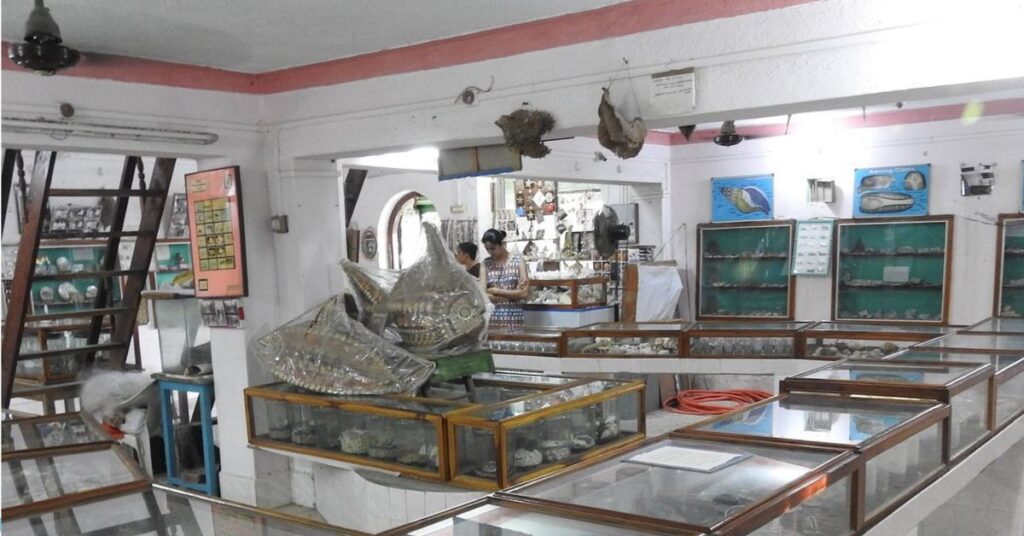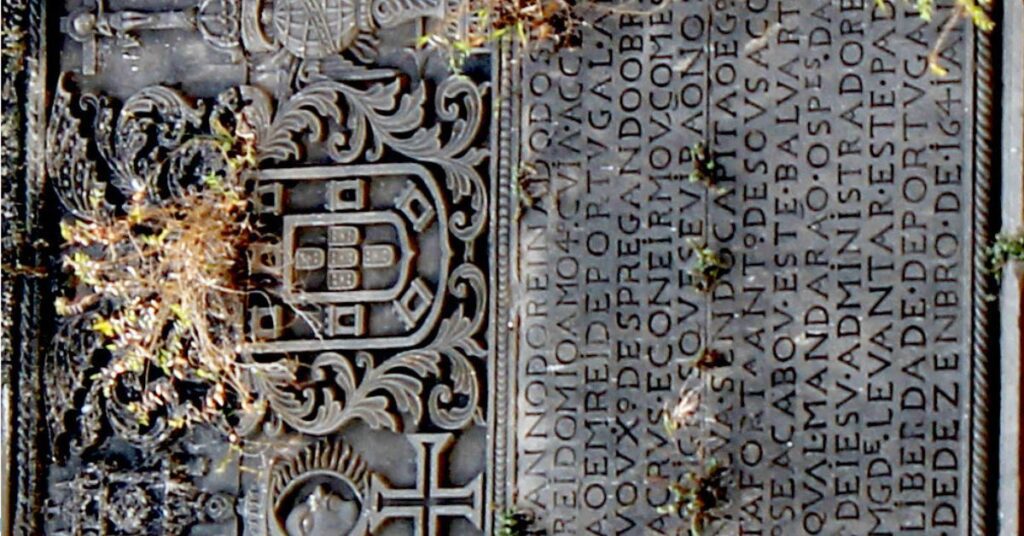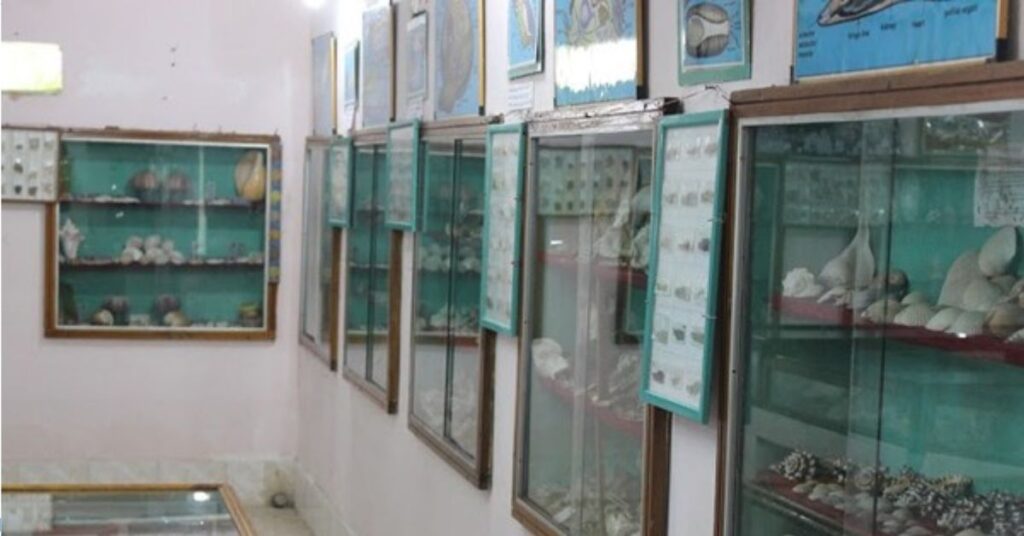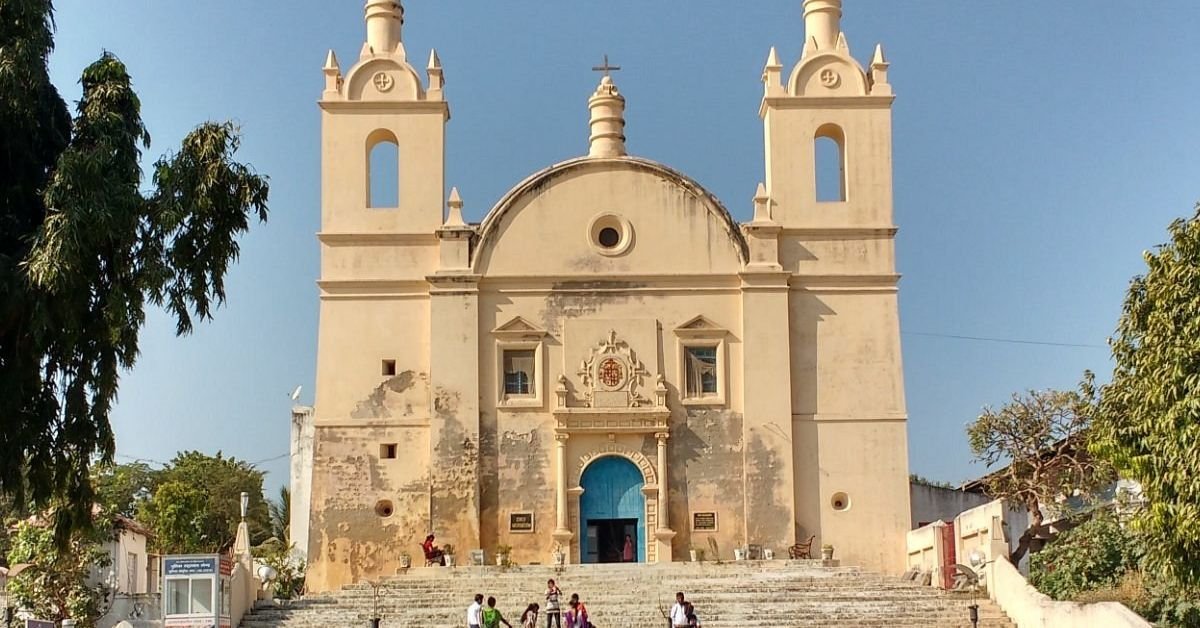Hidden away on the beautiful island of Diu, the Diu Museum is a treasure chest of history. Housed in an old Portuguese church, the museum showcases the island’s fascinating past. From ancient times to Portuguese rule, you can see it all here. With its collection of old statues, carvings, and other interesting things, the museum brings Diu’s story to life. It’s a perfect place to learn about the island’s rich culture and history.
How to reach:
By Air:
- Fly to Diu Airport: The closest airport is in Diu, just a short distance from the museum.
- Reach the Museum: Take a taxi or use local transportation for a quick journey.
By Train:
- Train to Veraval: The nearest major railway station is Veraval.
- Reach Diu: Travel by taxi or bus, which takes around 2-3 hours.
By Bus:
- Bus to Diu: Regular bus services connect major cities to Diu.
- Reach the Museum: The museum is a short distance from the Diu bus station.
By Car:
- Drive to Diu: Access Diu via National Highway 8E and follow signs to the museum.
- Parking: Parking is available near the museum.
Best time to visit:
Winter (November to February)
Winter is the most pleasant time to visit Diu, including the museum. Enjoy comfortable temperatures and ideal conditions for exploring both indoors and outdoors.
Monsoon (June to September)
While the monsoon brings lush greenery, it also means heavy rainfall. If you don’t mind the weather, you might appreciate fewer crowds and a serene atmosphere.
Summer (March to May)
Summer in Diu is hot, so plan your museum visit during cooler parts of the day. You might find fewer crowds but be prepared for the heat.
Attractions:
Artifacts and Relics:

The Diu Museum is like a time machine. It’s filled with old things like pottery pieces, metalwork, and old coins. These objects tell stories of how people lived, traded, and interacted with other places long ago. You can almost imagine what life was like back then. It’s a fascinating place to learn about Diu’s history.
Portuguese Colonial Artifacts:

The museum has a special section dedicated to the Portuguese era. You’ll find old maps, soldier uniforms, and beautiful furniture that show how the Portuguese lived and ruled. It’s like stepping back in time. These items tell stories about how the Portuguese and local people lived together and shaped Diu’s history.
Fossils and Natural History Exhibits:

The museum also takes you on a journey back in time with its natural history section. Discover fossils and rocks that tell the story of Diu millions of years ago. Learn about the plants and animals that once lived here and how the land changed over time. It’s like looking into a time capsule!
Local Experiences:
- Discover Diu Fort: Immerse yourself in history with the fort’s impressive architecture and stunning views.
- Visit St. Paul’s Church: Admire the church’s Baroque beauty and serene atmosphere.
- Experience Local Life: Explore vibrant markets for unique souvenirs and handicrafts.
- Relax on the Beach: Unwind at Nagoa Beach, perfect for swimming and sunbathing.
- Enjoy Stunning Views: Climb the Diu Lighthouse for panoramic vistas.
- Savor Local Flavors: Indulge in delicious seafood curries and traditional sweets.
- Explore Hidden Wonders: Discover the fascinating Naida Caves and their rock formations.
- Embrace Spirituality: Visit the Gangeshwar Temple for a serene experience.
- Discover Another Beach: Enjoy peace and quiet at Jallandhar Beach.
- See Diu from the Water: Take a boat ride for a different perspective.
- Find Your Peace: Relax in the museum’s serene gardens.
Travel tips:
Check Opening Times: Ensure the museum is open on your planned visit date.
Dress Comfortably: Wear suitable clothing for the weather.
Stay Prepared: Bring essentials like water, sunscreen, and a hat.
Respect the Museum: Follow guidelines and avoid touching exhibits.
Easy Transportation: Use local taxis or auto-rickshaws for convenience.
Avoid Crowds: Visit during off-peak hours for a more relaxed experience.
Carry Cash: Have some cash for souvenirs or additional services.
Enhance Your Visit: Consider hiring a knowledgeable guide.
Discover More: Check for special exhibitions during your visit.
Stay Hydrated: Bring water, especially in warmer weather.
Capture Memories: Take photos, following museum guidelines.
Explore Further: Combine your museum visit with other local attractions.
Conclusion
The Diu Museum offers a captivating journey through the island’s rich history and culture. Housed within a former Portuguese convent, it showcases a diverse collection of artifacts, from ancient relics to colonial remnants. Explore the museum’s exhibits to uncover the layers of Diu’s past, from its early days to its Portuguese influence. Combine your visit with exploring the nearby fort, beaches, and local markets for a well-rounded experience. Let Diu’s charm and history leave a lasting impression. Follow Xplro for more.
FAQs
1. What is the Diu Museum known for?
- The Diu Museum is celebrated for its diverse collection that includes historical artifacts, colonial-era relics, religious sculptures, and maritime equipment. It provides a detailed look into Diu’s past, highlighting its Portuguese colonial heritage and local cultural practices.
2. Where is the Diu Museum located?
- The Diu Museum is situated in Diu, within the union territory of Dadra and Nagar Haveli and Daman and Diu, India. It is housed in a historic Portuguese convent, centrally located near other significant landmarks in Diu.
3. What are the visiting hours for the Diu Museum?
- The Diu Museum typically operates from 9:00 AM to 6:00 PM every day. It’s a good idea to verify the current visiting hours before planning your trip, as they may vary or be adjusted for special occasions.
4. Is there an admission fee for the Diu Museum?
- As of the latest information, there is no admission fee to enter the Diu Museum. However, it’s advisable to check for any updates or changes to this policy before your visit.
5. How do I get to the Diu Museum from Diu Airport?
- The museum is about 8 kilometers from Diu Airport. You can reach it by taking a taxi or local transport, which usually takes around 15-20 minutes.
6. Are guided tours available at the museum?
- Yes, the Diu Museum offers guided tours. Hiring a local guide can provide you with a more in-depth understanding of the exhibits and the historical context. It’s recommended to arrange for a guide ahead of your visit for a richer experience.
7. Can I take photos inside the museum?
- Photography rules can vary. While some areas may allow photography, others might have restrictions. Be sure to look for signs indicating photography policies or consult with museum staff to avoid any issues.
8. What should I wear when visiting the museum?
- Opt for comfortable clothing and shoes, as you’ll be walking through various exhibits. Light and airy fabrics are suitable given the warm climate. Also, dress respectfully, especially when visiting sections with religious artifacts.
9. Are there places to eat at the Diu Museum?
- The museum does not have extensive dining facilities. However, there are several restaurants and food stalls in the vicinity where you can enjoy local dishes before or after your museum visit.
10. Is the museum accessible for people with disabilities?
- The museum aims to be accessible to all visitors. However, the historical architecture might pose challenges for those with mobility issues. It’s best to contact the museum in advance to inquire about specific accessibility features and accommodations.
11. What other attractions are close to the Diu Museum?
- Nearby attractions include Diu Fort, St. Paul’s Church, Nagoa Beach, and the Diu Lighthouse. These sites offer additional historical and scenic experiences that complement your visit to the museum.
12. Are there special events or exhibitions at the museum?
- The Diu Museum frequently hosts temporary exhibitions and special events that explore various themes or local traditions. For current or upcoming exhibitions, it’s a good idea to check the museum’s official website or contact them directly.






